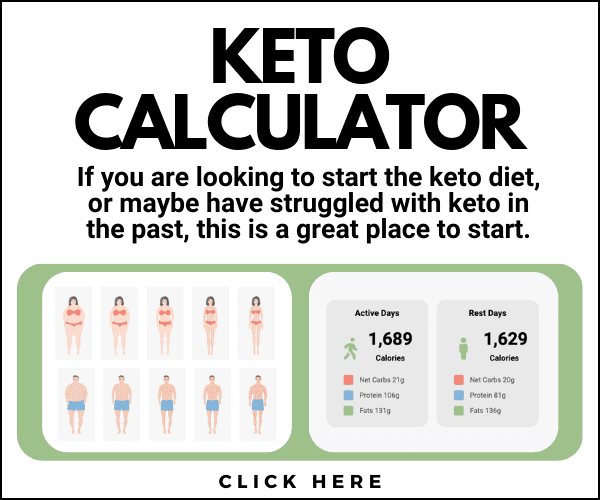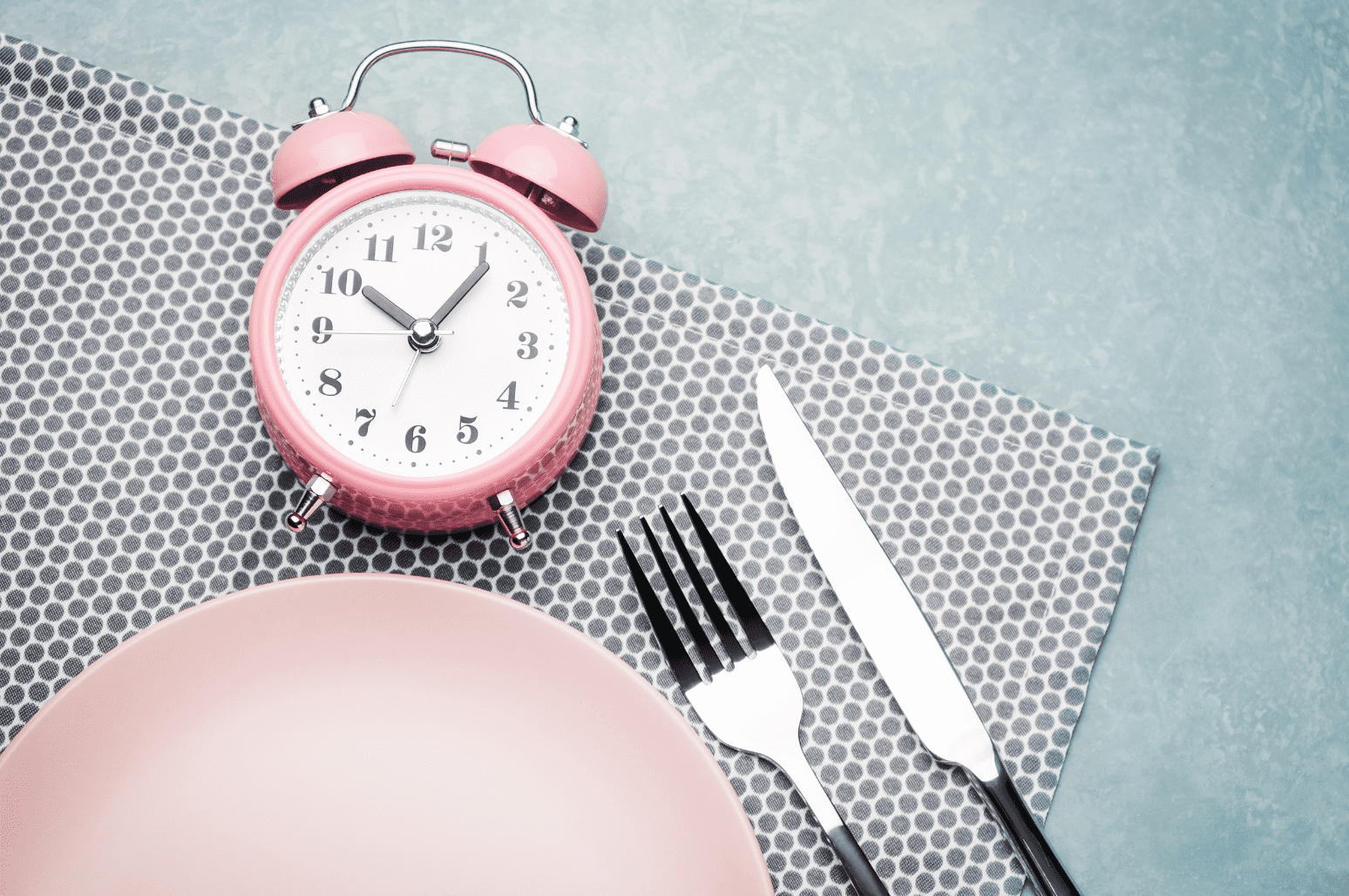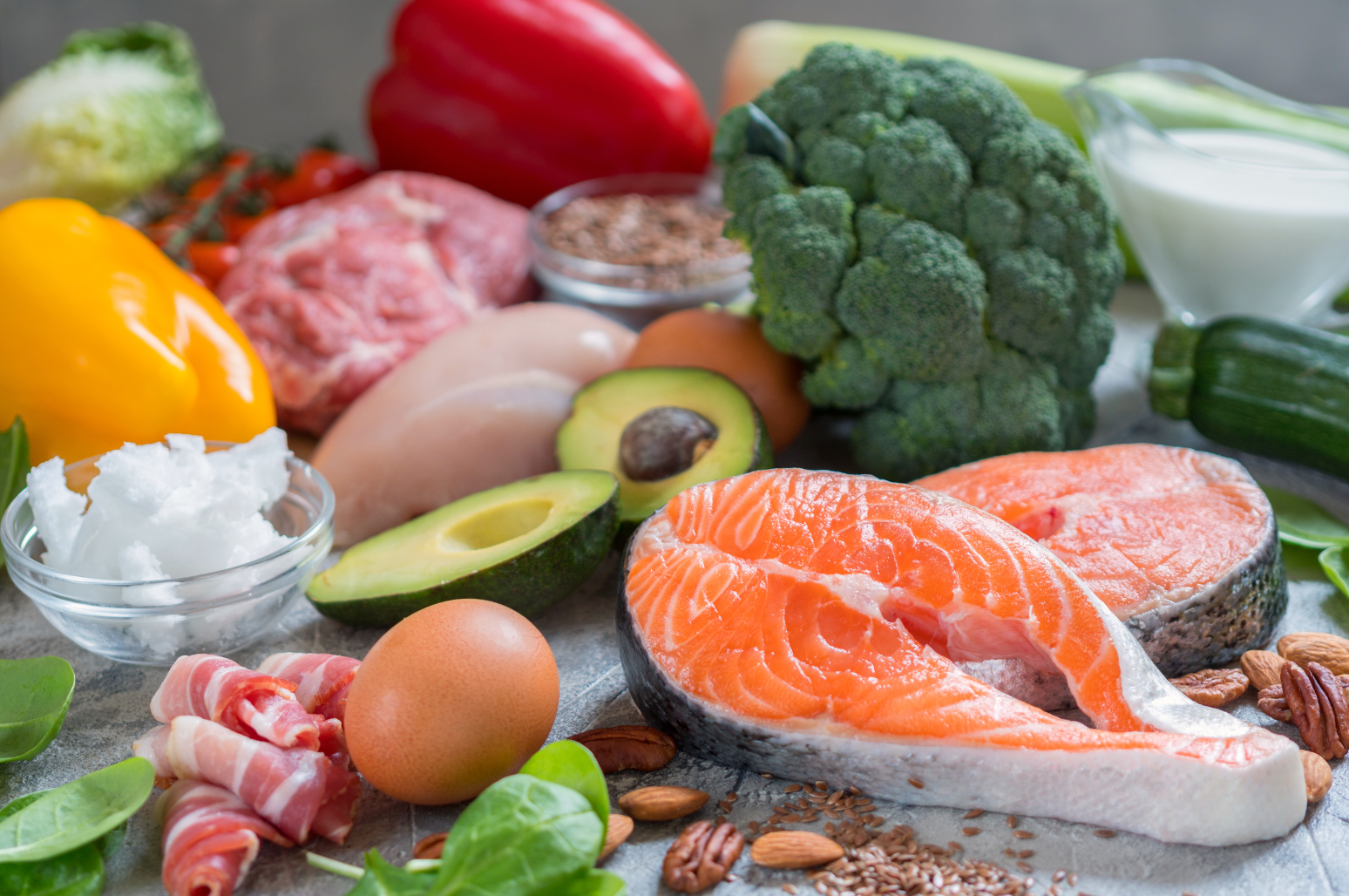
Fat fasting is a method of dieting used to accelerate weight loss. Many people use this method to breakthrough weight loss plateaus or to get back into ketosis after a cheat day. Let’s answer some important questions about this fasting method like what is a fat fast, is it safe, and is it effective?
What is a Fat Fast?
When you’re fasting you refrain from eating for a certain time period and you have fasted and feeding windows. Fat fasting isn’t technically a fast, rather, it raises your blood levels of ketone molecules and helps your body get into ketosis, which mimics the biological effects of fasting [1].
A fat fast is a low-calorie, high-fat diet that usually only lasts for 2-5 days. During a fat fast, you consume between 1000 to 1200 calories a day and around 80-90% of that should come from healthy fats, such as:
- Sardines
- Salmon
- Eggs
- Coconut oil
- Olive oil
- MCT oil
- Avocado
- Nut butters and high-fat nuts, such as macadamia
- Butter and heavy cream
- Coconut milk
- High-fat cheeses
The portion of fat in your diet should be around 80-90% with an emphasis on oils, creams, and butter. High-protein foods like chicken, meat, and fish are normally consumed in moderate amounts on keto. These foods aren’t often included during a fat fast because they can push your protein intake too high.
You might decide to add a small amount of meat to your fat fast for flavor but use it sparingly and focus on high-fat creams, oils, and butter. On a fat fast, you avoid foods that are high in protein and carbs and low in fat.
Should You Try a Fat Fast?
You might try a fat fast for numerous reasons. Some people try a fat fast to get into ketosis faster. The time it takes to get into ketosis varies considerably depending on several factors, but on a traditional ketogenic diet, you can expect to reach ketosis in 2-6 days. With fat fasting, you restrict both calories and your carbohydrate intake, which can get you into ketosis quickly or boost ketone levels if you’re already in ketosis [2].
You might try a fat fast if you’ve hit a weight loss plateau or if you’re struggling with hunger cravings.
Many keto dieters try a fat fast for a smoother recovery back into ketosis after a cheat day — where you eat high-carb foods that aren’t keto-friendly.
What are the Benefits of a Fat Fast?
A fat fast quickly depletes your body’s carbohydrate stores, so you burn more fat and shift your metabolism into ketosis. If you adhere to a fat fast protocol for 2-5 days, you might enter ketosis or boost ketones and primarily burn fat for fuel. The lack of dietary carbs, calorie deficit, and caloric restriction, and the boost in ketones can help with weight loss [3].
Since a fat fast is usually short-term, some of the weight loss might be water weight. When your body loses carb stores it also leads to water loss, which is stored alongside glycogen — the stored form of glucose. This is most likely if you’re not already keto-adapted or if you’re doing a fat fast following a cheat day [4] [5] [6].
With a fat fast, you’re not overloading your body with lots of calories and straining your digestive system. You consume healthy fats to regenerate your cells and promote ketosis. Research shows a high intake of fat on diets like the ketogenic diet help with weight loss and improves health markers, such as blood sugar. More research is needed on fat fasting [7].
However, due to the restrictive nature of this protocol, health professionals don’t advise staying on a fat fast long-term. Without a varied diet, many health experts point to an increased risk of nutrient deficiencies.
Have You Tried a Fat Fast?
How was your experience on a fat fast? Why did you decide to try a fat fast and what were your results?
References
Paoli, A. (2014). Ketogenic diet for obesity: Friend or foe? International Journal of Environmental Research and Public Health, 11(2), 2092-2107.
Bergqvist, A. G. C., Schall, J. I., Gallagher, P. R., Cnaan, A., Stallings, V. A. (2005). Fasting versus gradual initiation of the ketogenic diet: A prospective, randomized clinical trial of efficacy. Epilepsia, 46(11), 1810-1819.
Paoli, A., Grimaldi, K., Bianco, A., Lodi, A., Cenci, L., & Parmagnani, A. (2012). Medium term effects of a ketogenic diet and a Mediterranean diet on resting energy expenditure and respiratory ratio.BMC Proceedings, 6(3),
Manninen, A. H. (2006). Very-low-carbohydrate and preservation of muscle mass.Nutrition Metabolism (London),
Johnstone, A. M., Horgan, G. W., Murison, S. D., Bremner, D. M., & Lobley, G. E. (2008). Effects of a high-protein ketogenic diet on hunger, appetite, and weight loss in obese men feeding ad libitum. American Journal of Clinical Nutrition, 87(1), 44-55.
Kreitzman, S. N., & Coxon, A. Y., & Szaz, K. F. (1992). Glycogen storage: Illusions of easy weight loss, excessive weight regain, and distortions in estimates of body composition. American Journal of Clinical Nutrition, 56(1), 292S-293S.
Goday, A., Bellido, D., Sajoux, I., Crujeiras, A. B., Burguera, B., Garcia-Luna, P. P., Oleaga, A., Moreno, B., & Casanueva, F. F. (2016). Short-term safety, tolerability and efficacy of a very low-calorie-ketogenic diet interventional weight loss program versus hypocaloric diet in patients with type 2 diabetes mellitus. Nutrition & Diabetes, 6(9),










I started intermittent fasting, with clean keto, and it has worked great, until it didn’t. I hit a plateau that I just couldn’t break through, maybe because my metabolism slowed down as my calories were reduced. So I tried alternate day fasting, pure fasting on my fast day, but have evolved into a 500 calorie fast day, calories derived only from healthy fats; MCT oil, coconut oil and pasture raised ghee. I start each morning with a 4 cup pyrex bowl of green and black tea, pour in a capsule of ceylon cinnamon, a very generous sprinkle of ground cloves, a squirt of liquid stevia, and a tablespoon of MCT oil. Blend it up, and I have a delicious variation of bullet proof tea. With the cinnamon, cloves and stevia; it almost tastes like a flat Dr. Pepper. Sipping on this drink hopefully gets me through to or near noon, when I have a real bulletproof coffee, with MCT oil and ghee ( I started with grass fed butter but sort of like the ghee taste better, although bulletproof coffee with grass fed butter is still delicious.) Later in the afternoon, I might whip up a sugar free (with stevia) lemonade with ginger root, garlic and a splash of Apple cider vinegar, and that gets me through till dinner. Now dinner, how do I manage that on 500 calories per day or less? I make curry soup. I take 1 tablespoon ghee, and a whole heaping of curry powder (season to taste) and throw in some celery seed, because I always try to work celery seed into my diet. (Look up the benefits). The ghee gives the soup that fatty, chicken broth consistency. So add up the calories in the 2 tablespoons of MCT oil, maybe a tablespoon of coconut oil, 2 tablespoons of ghee, the ginger, garlic, lemon; and you’re still under the 500 calories alternate day fasting threshold. You can even have a second bowl of soup. No pain, but you do gain….health. Bon appetit!